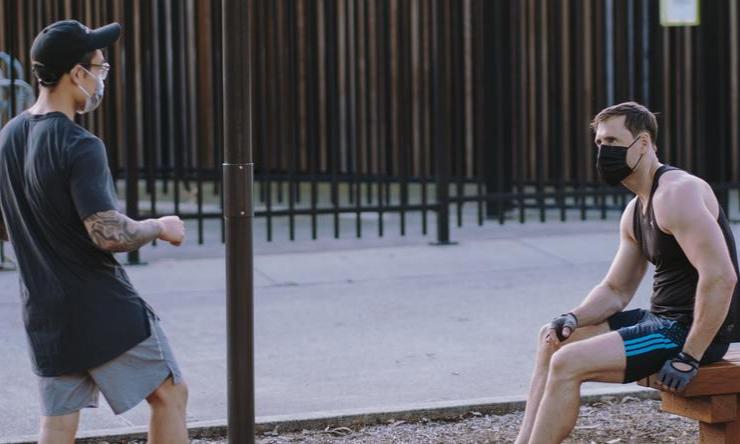Anxiety surrounding the return to normalcy
With COVID chaos slowly dying down, people may be heading back to work soon, which can be anxiety-provoking as they still try to protect themselves against the virus. A ▓▌┴±╔ńŪ°╚ļ┐┌ expert dives into the anxieties of returning back to a normal schedule, and what normal may look like in the near future.
ŌĆ£First, we need to realize that ŌĆśnormalŌĆÖ is something that changes with time. People think they will go back to a pre-COVID time, and that wonŌĆÖt happen for a long time. People need to understand the new normal,ŌĆØ said Dr. Asim Shah, professor and executive vice chair in the Menninger Department of Psychiatry and Behavioral Sciences at Baylor.
He outlines the stress people may feel going back to their normal schedules:
- The biggest anxiety is about catching the virus. There is a higher chance to contract COVID-19 with more businesses opening and people returning to the workforce.
- People have become accustomed to the lifestyle after working from home for at least one month. Many believe there is no difference in productivity between working from home or at the office.
- Although some businesses will reopen, children will continue their schooling remotely. Many parents are worried about who will take care of their children when they go back to work.
ŌĆ£Every indication, every study and every stat shows that you donŌĆÖt need to go back to normalcy right away ŌĆō you can take gradual steps,ŌĆØ Shah said. ŌĆ£The advantage of doing this gradually is that it reduces anxiety. When you move rapidly, panic and anxiety are increased.ŌĆØ
Individuals will feel anxious about this change, whether or not they struggle with mental health issues. People who have preexisting mental health disorders are the first ones to be affected by any anxiety- or stress-provoking situation. They can use telehealth to consult with their providers, and they may need to modify their medication doses and frequency.
According to Shah, the best way to maintain positivity is to limit your news intake and to focus on the facts of the virus. He also suggests eating well, exercising, getting enough sleep, staying optimistic and avoiding or reducing drug and alcohol consumption.
ŌĆ£ItŌĆÖs easy to become anxious, but the best way to keep positive is to focus on facts. Evidence doesnŌĆÖt lie. Facts donŌĆÖt lie,ŌĆØ he said. ŌĆ£Remember, tomorrow is another day, and things are getting better. If you take as many precautions as recommended, the chance of contracting the virus is lower.ŌĆØ
Shah suggests gradually taking steps to move into normalcy to ease anxiety that employees may be experiencing about returning to work. For example, bringing some essential people back into the workforce, or opening stores and restaurants for pick-up or takeout only. After about two to four weeks minimum, take the next step by starting to bring back regular aspects of work. If things move smoothly, then continue to take small steps. More steps do not translate to ŌĆ£normal.ŌĆØ Companies can have 25 percent of their employees return every two weeks. Another option is to start with shorter hours and fewer people around the office, then gradually increase those numbers every few weeks. Workplaces can help ease employeesŌĆÖ anxiety by screening them upon entrance, as well as provide hand sanitizer often.
Although itŌĆÖs easy to focus on the negative side of the COVID-19, the virus could provide optimism for flu season. People have been diligent in hand washing and sanitizing and staying home if they feel ill. The outcome of this will not only minimize the spread of the virus, but has taught us to take the same precautions when flu season begins.



